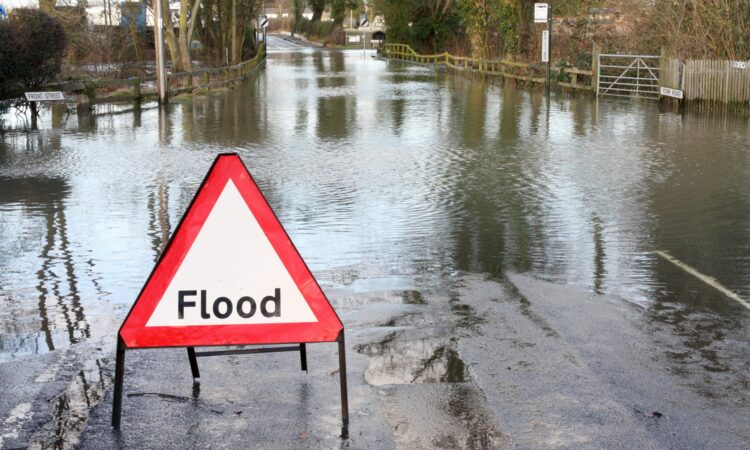

High street banks have said that they will still lend on properties with high risk of flooding as long as adequate insurance is in place but have said that the extension of the government-backed insurance scheme Flood Re is “critical”.
The Treasury Committee wrote to four of the UK’s largest high street banks on a range a of topics, including savings, branch closures and remuneration.
One of the topics that the committee called on chief executives of Barclays, HSBC, Lloyds Banking Group and Natwest was the impact of flood risk on house prices, identifying customers in flood risk areas and the provision of long-term mortgages for these properties.
The committee has now written to the Financial Conduct Authority to ask what the regulator’s assessment of the risk that people with properties in areas of high flood risk will not be able to remortgage in the future.
Barclays
Matt Hammerstein, Barclays UK CEO, said that it did not produce market data but house price analysis undertaken by third parties suggested properties in flood areas have a value around three to eight per cent lower than properties with no flood risk.
He noted that with flood risk in the UK expected to grow due to climate change, the increased risk of flooding would “impact the valuation of properties directly, as well as indirectly where a particular area becomes high risk and property demand falls”.
Hammerstein continued that the firm was “keenly aware for the need for joined up action…to address climate risks”, which included the UK property market.
He added that this would ensure homeowners were “not unfairly penalised” for flood or other climate risk.
Hammerstein said that around 88.8 per cent had negligible, very low or low flood risk.
He noted that 5.9 per cent had moderate, high or very high risk, and 5.4 per cent of its mortgage book was missing the data.
Hammerstein reiterated that the bank did not have a policy of restricting availability of mortgages to those in flood risk areas, adding “we lend irrespective of the flood risk band”.
He said that a restriction would arise if a borrower was unwilling or unable to obtain insurance.
HSBC
HSBC UK’s CEO Ian Stuart said that there was “currently little evidence” to support the notion that there were weaker house prices for properties impacted by flood risks.
He noted that this could be due to the fact that these properties tend to be in “desirable areas where demand is high despite the increased risk”.
However, he said that based on historical research by third parties there was some “modest valuation reductions” to properties with flood risk.
Stuart continued that around 30,000 properties in its secured portfolio were classified as being at high risk and this would be ceded to reinsurer Flood Re.
Flood Re is a joint initiative between the government and insurers and aims to make flood cover in household insurance more affordable. It is due to expire in 2035.
“Our expectation is that we would continue to lend on these properties beyond 2035, subject to the properties being insurable. We believe that the extension of Flood Re beyond 2035 is therefore critical,” he explained.
Lloyds Banking Group
Lloyds Banking Group’s chief executive Charlie Nunn said it had worked with Rightmove on a property level analysis on property prices and current weather events.
He explained that properties that are not prone to regular flooding sometimes but had an “unexpected flood” saw the biggest impact on price.
“We believe this is because in areas where flooding is more common the flood risk is already reflected in local house prices, whereas in areas that have not experienced a flood there may be a more immediate effect on price,” Nunn noted.
He continued that anecdotal feedback said that property prices “generally reflect” the risk related to current flood events.
Nunn said that house prices in desirable locations were “more resilient”, and less desirable areas would an “initial pause in sales” before “resuming with subdued house price growth”.
However, he said that property prices did not reflect future weather events.
Nunn said that it was assessing current and future effect of flood risk in its portfolio and it was developing its capabilities to assess credit and conduct risk implications of floods.
Other factors that would impact offering long-term mortgages would be ongoing flood defence maintenance, initiatives such as Flood Re and enforcement of flood resilience measures.
Natwest
Alison Rose, Natwest’s CEO, said that it had been a “long-standing” part of its valuation strategy to exclusive automated and desktop valuations in high flood risk areas.
This is to ensure flood risk is properly accounted for in valuation assessment.
She added that it was “difficult to identify a significant correlation between house valuation and flood risk in general at this stage”.
Rose continued that she was able to identify customers living in flood risk areas and this was publicly available.
“We do not exclude lending in flood risk areas. We do ensure that a physical valuation is always undertaken where flood risk is high, allowing a professional valuer to assess whether the property is “mortgageable, saleable and insurable,” she explained.
Rose said that Natwest would only lend where the property is insurable and has flood cover. She continued that the firm had declined fewer than five applications from around 120,000 based on the advice from a value.






